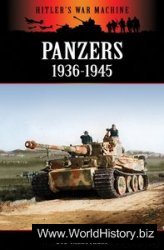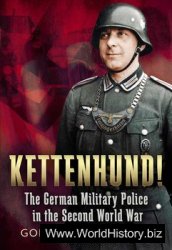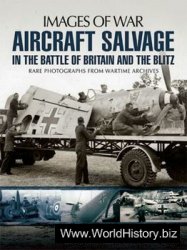Tain of shells to impede the arrival of German reinforcements. However, delays on the flanks caused congestion in the British centre, robbing the attack of its impetus, and German strongpoints also held up the advance. Although the British won possession of Neuve-Chapelle village and flattened the salient, they were unable to exploit their initial success by the time the battle ended on March 13. The British incurred nearly 13,000 casualties, the Germans about
12,000. Neuve-Chapelle furnished the BEF with a preliminary grammar of trench warfare assaults, but many of its lessons - particularly the value of hurricane bombardments - were ignored over the next two years. PJS.
Nevada. US battleship. Name ship of class; 10 x 14in guns; first dreadnoughts with “all or nothing” protection. At Scapa Flow 1918. Reconstructed after damage at Pearl Harbor; took part in invasion of France, then Iwo Jima and Okinawa. Target at Bikini; sunk
Newall, Marshal of the RAF Lord
(1886-1963). Br. Chief of the Air Staff 1937-40. During Newall’s tenure as cas it became apparent that the German air force had outstripped the British in numbers and capacity. This resulted in the view that it would be imprudent to provoke German air attack until the imbalance had been corrected. Newall endorsed the policy of restricted bombing which the British followed in the opening months of the war but he believed that the main function of the raf would be strategic bombing against the heart of Germany, and in the last year of peace he was seriously disquieted by the priority given, at political insistence, to Fighter Command at the expense of Bomber Command. Nevertheless, he deserves credit for the technical and tactical development of Fighter Command which enabled it to win the Battle of Britain. ANF.
New Armies. Name given to new military formations - other than those of the Regular Army and Territorial Force - raised in Britain by voluntary enlistment in 1914-15. Like the original bef, each New Army contained six infantry divisions. The first three New Armies (9th to 26th Divisions) were recruited directly by the War Office, while the Fourth and Fifth New Armies (30th to 41st Divisions) were largely composed of units raised by cities, towns and private committees. The title “New Army” was only used for administrative and training purposes and the individual divisions did not necessarily fight alongside each other on active service. PJS.
Newfoundland Regiment. Granted the prefix “Royal” in 1917, the regiment provided an active service battalion which fought on Gallipoli and the Western Front with the British 29th Division and, later, the 9th Division, 1915-18. Only one British battalion suffered heavier losses on July 1 1916.
New Guinea campaign (1942-44). In April 1942, the Japanese offensive was at the flood. The Philippines, Malaya, Singapore, Burma, Dutch East Indies, most of New Guinea and numerous British Pacific islands were in their hands and they had attained the outward limits of expansion previously set by their strategic planners. The ease with which they had gained these prizes now tempted them to extend further the bounds of the “Greater East Asia Co-Prosperity Sphere”. The first step was to go for the underbelly of Papua and take Port Moresby with a sea landing launched from Rabaul in New Britain. However, the Japanese radio codes had been broken. Through intercepted signals, the Port Moresby invasion force was caught
Off Misima Island on May 7 by carrier-borne aircraft from Adm Fletcher’s Task Force 17 in the Coral Sea. After losing a carrier, the Japanese were forced to abandon the Port Moresby plan. Instead, Maj Gen Horii landed with
11,000 troops at Gona on July 21
1942, took Buna and marched south across the Owen Stanley Range, using the Kokoda trail. By September 26 Horii was only 30 miles (48km) from Port Moresby despite vigorous Australian resistance. A landing at Milne Bay at the eastern tip of Papua was successfully repulsed by the Australian garrison in August, and early in October the Australians began to force the Japanese back over the Owen Stanleys.
Heartened by their success at Milne Bay - the first resounding defeat inflicted on Japanese land forces in the war - the Australians invested Buna and Gona by late November. Gona fell on December 19 and Buna early in January
1943. Allied sea and air power were now in the ascendant and through 1943 a series of amphibious landings, brilliantly executed by the US 32nd Division, steadily forced the Japanese back along the coast of northeast New Guinea. Inland, a bold parachute descent, personally overseen by Gen MacArthur, was made at Nad-zab on September 5. It was synchronized with the sea landing of the Australian 9th Infantry Division, backed by US Army combat engineers, near Lae. The Australian 7th Division was then flown in to Nadzab. Salamaua was taken on September 12 and Lae four days
Later. By now, the Allies were getting highly effective air support from Gen Kenney’s 3rd US Air Force and the irresistible drive continued under the energetic Allied commander, Gen Blarney. The 7th Division now drove up the Markham valley whilst the Americans continued their sea landings in support of the Australian 9th Division as it advanced around the coastline of the Huon Peninsula. Finschhafen was captured on October 2 and in April 1944 the jaws of the pincer met at Bogadjim. Madang fell on April 24.
During the period December
1943-March 1944, the US Marines had regained New Britain and the Solomons. Remaining Japanese naval and air bases on New Britain and New Ireland (Rabaul and Kavieng), were now isolated. Between April and July 1944 a series of US landings along the coast of New Guinea eliminated'the last Japanese resistance. Although it owed much to air power, the fighting qualities of the incomparable Australian infantry and their American partners showed that the Japanese were not unbeatable supermen. MH.
New Jersey. American World War II battleship. Brought out of mothballs to support shore operations during Korean War, and again in Vietnam following the bombing halt in 1968. Her nine 16in guns had much greater power and range than the 8 and Sin guns of the cruisers and destroyers that made up the Navy’s shore bombardment force. Task Group 70.8. From September 1968 to March 1969, New Jersey mainly supported 3rd Marine Division operations along the demilitarized zone. She also bombarded targets in the North.
New Mexico. US battleship. Name ship of class; 12 x 14in guns. Completed 1918. Major part in Pacific landings, 1943-45.
“New Villages” see Malayan
EMERGENCY.
New York US battleship. Name ship of class; 10 x 14in guns. Completed 1914. Flagship of US squadron with Grand Fleet 1917
18. Atlantic service 1941-43 included “Torch” landings; later at Iwo Jima, Okinawa.
New Zealand Expeditionary Forces. New Zealand troops served overseas in both world wars. In World War I, when 16,654 New Zealanders lost their lives, they usually fought alongside the Australians as part of anzac formations. In World War II, the 1st NZ Division served in Greece, Crete, North Africa and Italy. The 2nd Division also fought in Italy where it joined the 1st NZ Division and the 4th Indian Division to form the New Zealand Corps under command of Lt Gen Freyberg. A third NZ division served in the Southwest Pacific theatre (Fiji, New Guinea, Solomons) until 1944 when it was disbanded and used as a reinforcement pool for the 2nd NZ Division in Italy. New Zealand dead in World War II totalled 11,671. MN.
New Zealand forces in Korea.
The first New Zealand forces to fight in the Korean War were two frigates committed on August 1 1950. They were followed in January 1951 by the 16th Field Artillery Regiment. See also British FORCES IN KOREA; COMMONWEALTH DIVISION.
Ngaundere
(1914—16).
Nghia Lo Ridge campaign (1952). The struggle between Vietnamese and French forces for control of the T’ai hill country west of Hanoi came to a climax in October 1952. The 308th, 312th and 316th Divisions of the People’s Army (pavn) swept over the small French outposts surrounding Nghia Lo and then seized the town on the 18th. That victory immediately placed all other French posts to the north and west in jeopardy. Airheads hastily established by the French at Lai Chau and Na San could be nothing more than isolated strong-points. The deteriorating situation in this region led the French to mount Operation “Lorraine”.
Ngo Dinh Diem see diem, president NGO DINH.
Ngo Quang Truong, Lt Gen
(b. l929). Republic of Vietnam. Commanded the Army of the Republic of Vietnam (arvn) 1st Division in Hue during the 1968 Tet offensive. Elements of his division were the first to counterattack. In April 1972, as Quang Tri province fell to the communists, Truong took over as I Corps commander and organized a defence line on the south bank of the My Chanh river that saved Hue from capture. Still I Corps commander in 1975, Truong was ordered on March 25 to evacuate Hue and Chu Lai and regroup in Da Nang. However, the rapidity of the communist advance, delays and general chaos prevented his mounting a defence of the latter. On March 28 he ordered his remaining troops to leave Da Nang by sea. WST.
Nguyen Cao Ky, Air ViceMarshal (b. l930). Republic of Vietnam. Received flight training under French auspices and rose to lieutenant in the Vietnam National Army. As a lieutenant colonel in the South Vietnamese Air Force in 1963, Ky participated in the coup against Ngo Dinh Diem. The subsequent jockeying for power subsided in July 1965, when Ky accepted the post of premier in a government headed by Gen Nguyen Van Thieu. Imperious as he was impetuous, Ky alienated support by crushing Buddhist dis-sidence with force. Under pressure from the US and senior South Vietnamese officers, he agreed in 1967 to run for vice-president on Thieu’s ticket. He gradually slipped from view, and Thieu disqualified his candidacy for the presidency in 1971. Ky’s flamboyant, martial personality gave him a certain appeal among his fellow-countrymen, but Americans tended to perceive him as brash and irresponsible. WST.
Nguyen Chanh Thi, Gen (b. l923). Republic of Vietnam. Commander of I Corps, Army of the Republic of Vietnam (arvn) when demonstrators led by the militant Buddhist monk Tri Quang rose to protest against Premier Nguyen Cao Ky’s postponement of elections in 1966. Ky dismissed Thi, a political ally of Quang’s, in March, thinking this would quell the disturbance. But Thi’s troops joined the demonstrators and helped them take over the cities of Hue and Da Nang. Fearing regional secession, Ky dispatched loyalist troops to suppress the rebellion and sent Nguyen Chanh Thi into exile.
Nguyen Chi Thanh, Senior General (1914-67). Democratic Republic of Vietnam. On becoming a senior general in 1959, Nguyen Chi Thanh attained a rank in the People’s Army of Vietnam (pavn) held by only one other person, Vo Nguyen Giap. That date also marked the beginning of his assignment, as a member of the Lao Dong (Workers’, or Vietnam Communist) Party Political Bureau, to supervise preparations for armed struggle in South Vietnam. In 1961 he relinquished his post as chief of the pavn General Political Directorate to take over as secretary of the Central Office for South Vietnam (cosvn). A proponent of main force offensives, Thanh opposed reverting to guerrilla warfare, as some advocated when the United States intervened. In June 1967 he travelled to Hanoi to present the draft plan for attacks on the cities that became the Tet offensive and died there of a heart attack on July 6. WST.
Grand Duke Nicholas’ prominence in Russian military affairs was by no means solely a result of his position in the royal family. He studied at the General Staff Academv. served in the Russo-Turkish War, 1877-78, and in 1895—1905 introduced valuable reforms as Inspector General of Cavalry. After the Russo-Japanese War, 1904—05, he became president of the Imperial Committee of National Defence, established to attempt to correct some of the shortcomings of Russian arms revealed in that conflict.
On August 2 1914, Tsar Nicholas II, the Grand Duke’s distant cousin, appointed him c-in-c of the Russian armies; this was a position that he neither expected nor desired. Although a physically imposing figure, he was unable to exert close control over the various fronts and was frequently at variance with Sukhomlinov, the Minister of War. Encouraged by French entreaties for help in relieving German pressure in the west, Nicholas’ general strategy consisted of little more than launching his armies in a series of offensives that lasted from August to November. The casualty lists grew without any significant advantage to show for them and the situation did not improve in 1915 with the checking of Gen Ivanov’s spring offensive and the Central Powers’ counter thrust. A year of reverses inevitably resulted in criticism of the Grand Duke’s strategy while, at the same time, the Tsar’s unpopularity resulted in his being spoken of as a possible successor. The Tsar’s answer to these problems was to take personal control of his armies and the Grand Duke was appointed Governor General of the Caucasus. He nevertheless remained an important figure in Russian political events. In November 1916 he tried to convince the Tsar of the need for constitutional reform in order to prevent the impending catastrophe. Six months later he telegraphed a message to the Tsar adding his voice to the others calling upon him to abdicate. Nicholas wished to re-appoint the Grand Duke as c-in-c but the Provisional Government felt that public feeling would no longer tolerate a Romanov in the post. Instead, he retired to the Crimea and in March 1919 went into exile, spending the remaining years of his life in France and Italy. He thenceforth eschewed any close involvement in the “White Russian” cause. MS.
Nicholas II, Tsar of Russia
(1868-1918). Reigned 1894-1917. Defeat in the Russo-Japanese War and the deprivations of 1914-16 damaged his prestige. He assumed the supreme command of his armies in September 1915. He abdicated in March 1917 and was murdered by the Bolsheviks in July 1918.
Nieuport IVG/VIM (French, pre-WWI). Two-seat reconnaissance monoplane. First flew 1911; Type IVM won French military aeroplane competition, 1911. In addition to French military use, several Type IVG supplied to rfc and to Italian Battaglione Specialisti, which took three to Libya October 1911: one made the first wartime aerial reconnaissance, October 23, Italo-Turkish War 1911—12. In RFC no Nieuport monoplane actively survived the so-called Monoplane Ban of 1912. Some, including later but similar Type VIM, acquired by many other nations before 1914. One 50hp, 70hp or lOOhp Gnome engine; speed 55mph (88kph); armament nil.
Nieuport Scouts 11 to 27 (French, WWI). Single-seat fighting scout. Prototype Nie 11 flew summer 1915; first delivery to operational escadrille January 5 1916. Successfully countered Fokker monoplanes; developed via llOhp Type 16 to Types 17,17bis, 21,23, and to more refined Types 24, 24bis and 27. Outclassed by autumn 1917; Type 27 in use with rfc/raf until April 1918. Widely used by Allied air services; various types built Britain, Italy, Russia and (postwar) Japan. One 80-130hp rotary engine, normally Le Rhone or Clerget; max. speed (Nie 27) 107mph (171kph); one (rarely two) 0.303in machine gun.
“Night of the Long Knives”. Hitler’s purge of the SA, carried out on June 30 1934.
Nijmegen. The bridges across the Waal river at Nijimegen, about 10 miles (16km) south of Arnhem, and across the Maas at Grave, some 7 miles (11km) south of Nijmegen, formed the central objectives of “Market Garden”, the airborne operation to open a corridor to the Lower Rhine. In a daylight landing on September 17 1944 - when British 1st Airborne Division landed at Arnhem to the north and US 101st Airborne Division at Eindhoven to the south - Maj Gen James Gavin’s US 82nd Airborne Division paratroopers dropped at Grave, where 504th Parachute Infantry quickly secured the bridge. Reinforced by glider-borne troops, 82nd Airborne advanced on Nijmegen against.




 World History
World History









